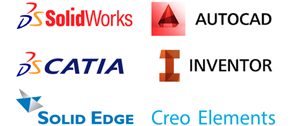This morning Brian Solomon wrote an article called Apple, With Smart-Home Rumors Flying, Leads Tech Surge, in which he cites a Financial Times article that rumors Apple will introduce a new software platform that will turn their iPhone “into a remote control for lights, security systems, and other household appliances.” Apple shares are up 1.8% so far today and are bouncing right up near their 52 week high.
For investors approaching Apple using options this week we highlight one interesting put contract, and one interesting call contract, from the July expiration.
Click here to find out the Top YieldBoost AAPL Puts »
The put contract our YieldBoost algorithm identified as particularly interesting, is at the $615 strike, which has a bid at the time of this writing of $11.35. Collecting that bid as the premium represents a 1.9% return against the $615 commitment, or a 18.2% annualized rate of return (at Stock Options Channel we call this the YieldBoost).
Selling a put does not give an investor access to AAPL’s upside potential the way owning shares would, because the put seller only ends up owning shares in the scenario where the contract is exercised. So unless Apple sees its shares decline 1.6% and the contract is exercised (resulting in a cost basis of $603.65 per share before broker commissions, subtracting the $11.35 from $615), the only upside to the put seller is from collecting that premium for the 18.2% annualized rate of return.
Interestingly, that annualized 18.2% figure actually exceeds the 2.1% annualized dividend paid by Apple by 16.1%, based on the current share price of $625.44. And yet, if an investor was to buy the stock at the going market price in order to collect the dividend, there is greater downside because the stock would have to lose 1.62% to reach the $615 strike price.
Always important when discussing dividends is the fact that, in general, dividend amounts are not always predictable and tend to follow the ups and downs of profitability at each company. In the case of Apple, looking at the dividend history chart for AAPL below can help in judging whether the most recent dividend is likely to continue, and in turn whether it is a reasonable expectation to expect a 2.1% annualized dividend yield.
Turning to the other side of the option chain, we highlight one call contract of particular interest for the July expiration, for shareholders of Apple (NASD: AAPL) looking to boost their income beyond the stock’s 2.1% annualized dividend yield. Selling the covered call at the $635 strike and collecting the premium based on the $11.80 bid, annualizes to an additional 18.6% rate of return against the current stock price (this is what we at Stock Options Channel refer to as the YieldBoost), for a total of 20.7% annualized rate in the scenario where the stock is not called away. Any upside above $635 would be lost if the stock rises there and is called away, but AAPL shares would have to advance 1.6% from current levels for that to occur, meaning that in the scenario where the stock is called, the shareholder has earned a 3.5% return from this trading level, in addition to any dividends collected before the stock was called.
Click here to find out the Top YieldBoost AAPL Calls »
The chart below shows the trailing twelve month trading history for Apple, highlighting in green where the $615 strike is located relative to that history, and highlighting the $635 strike in red:
The chart above, and the stock’s historical volatility, can be a helpful guide in combination with fundamental analysis to judge whether selling the July put or call options highlighted in this article deliver a rate of return that represents good reward for the risks. We calculate the trailing twelve month volatility for Apple (considering the last 251 trading day AAPL historical stock prices using closing values, as well as today’s price of $625.44) to be 24%.
In mid-afternoon trading on Tuesday, the put volume among S&P 500 components was 1.17M contracts, with call volume at 2.28M, for a put:call ratio of 0.51 so far for the day. Compared to the long-term median put:call ratio of .65, that represents very high call volume relative to puts; in other words, buyers are preferring calls in options trading so far today.
Find out which 15 call and put options traders are talking about today.
Special Offer: Join the income investing conversation on ValueForum.com with a special Seven Days for Seven Dollars invitation from Forbes.
via apple - Google News http://ift.tt/1tnFi91













0 comments:
Post a Comment